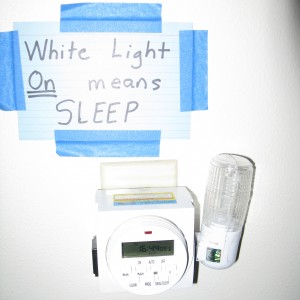by Kim Keller
The calls kept coming in the middle of the night. It was Alice on the phone, asking if it was time to start her day.
See, Alice is 86 and has Alzheimer’s. Like many people who suffer from this dreaded chronic disease, Alice often wakes up in the wee hours of the morning, confused and disoriented. This is a common symptom of dementia known as sundowning, which gets its name from the time of day — late afternoon, evening and night — in which it occurs. Beyond confusion and disorientation, sundowners may also exhibit uncharacteristic behavior such as aggression, paranoia or heightened anxiety.
When Alice would wake up in the middle of the night, she didn’t know if she should be getting up to start her day. She could no longer just look at the clock and figure out what to do. Consequently, Alice would pick up the phone to call one of her kids for guidance. (As readers of this space will no doubt recall, Alice has eight kids, most of whom live nearby, in and around Muskego, Wisconsin. Along with their own extended families, they band together to look out for the family matriarch and refer to themselves as “Team Alice.”)
Team Alice needed to come up with a plan to stem the late-night phone calls. Steven and Karyn, two of Alice’s grandchildren, came up with a clever solution. They plugged Alice’s nightlight into a timer with a note in big block lettering right above the light that reads: “White Light On means SLEEP!”
Now when Alice wakes up, she sees that the light is on and reads the note that tells her to stay in bed and go back to sleep. It didn’t initially stop all the phoning, but it made it easier to explain when Alice did call.
“Mom, is the white light on?”
“Yes,” Alice would reply.
“Then it’s time to sleep.”
“Okay,” she’d say.
Reassured, Alice could go back to sleep.






